Roofing board: description and application
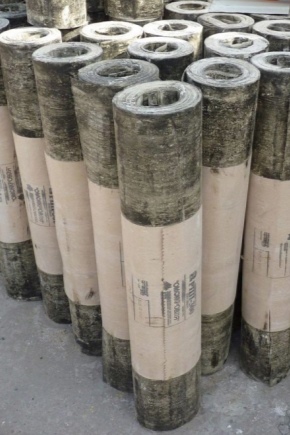
The modern range of waterproofing and roofing materials is designed for numerous applications. Most of the products are sold in roll format for easy transportation and installation. Despite the wide variety of analogs, the well-known product called roofing paper is still relevant.

What it is?
Roofing paper is officially considered a type of roofing material. It is a durable material produced in rolls. A special kind of cardboard was invented a long time ago and is sold in any hardware store. In order for the coating to have the necessary technical characteristics, special coal cardboard is treated with tar-based impregnation. Also used in the manufacture of mineral chips or sand.
Today, both large manufacturers and start-up firms are engaged in the production of this material. There are several variants of this product, which differ in purpose and technical characteristics.
Some types are great for protecting buildings from moisture, others are used for roofing.
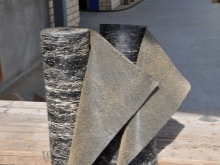
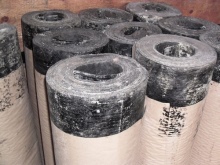
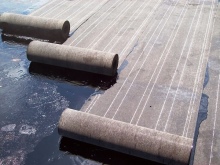
Roofing paper cannot boast of a high strength indicator, but it is affordable. If the coating becomes unusable, you can replace this area at no special cost. The material is often used for temporary structures. When erecting capital structures, it is recommended to make a choice in favor of stronger and more wear-resistant materials.
For many years of working with this material, experts have identified its advantages and disadvantages. When working with tar paper, you do not need to have special skills and abilities. The weight of the material is small, so it is not difficult to work with it. It can also be used for structures that cannot withstand high pressure.
Excellent flexibility makes it possible to lay the product at different angles. With its help, you can protect the building from moisture, condensation and precipitation.
Roofing tiles are most often chosen for small buildings such as sheds, garages and other structures.
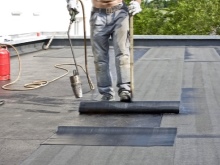
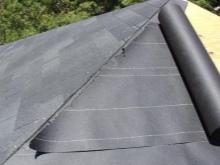
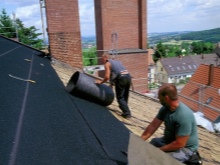
As disadvantages, in addition to the low indicator of reliability and strength, it is possible to note the flammability. Also, this product has insufficient resistance to external factors.
Although waterproofing is done with roofing roofing, the protection will not be ideal. Under the influence of low temperatures, the material loses its elasticity and becomes covered with cracks. In this case, it is recommended to install in several layers.
Another negative aspect is low aesthetic qualities. Due to its rough and unpresentable appearance, roofing paper is not used for decoration. As a rule, this product is available in black or dark gray colors.
The note! There are two types of products: roofing and waterproofing.
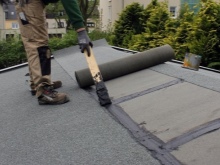
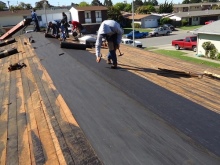
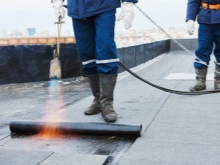
What is the difference from roofing material?
Outwardly, it is almost impossible to distinguish one roofing material from another, while there is a significant difference between them. It lies in the technical characteristics of each product. Just like roofing felt, roofing material is made on the basis of cardboard, but it is impregnated not with a resin composition, but with liquid bitumen, as a result of which the performance properties of roofing material become higher in comparison with roofing tar paper. Due to the increased practicality and reliability, the first type of product can be used in the construction of durable structures.
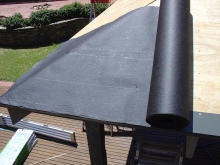

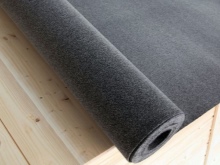
Specifications and brands
A quality product is necessarily manufactured in accordance with established standards. Russian companies adhere to GOST 10999-76.
Modern manufacturers offer four options for this material.
- The name is tar-leather (smooth canvas, without dusting). The top layer is missing. Brand - TK 350. Scope of use - vapor barrier and roof decoration. Weight (1 square meter) - 350 grams.
- Product name - waterproofing. Lack of top layer. Brand - TG 350. Main purpose - waterproofing. Weight - 350 grams.
- The name is a sand-covered material (fine-grained). This type of product can be identified by a special protective layer of quartz sand; a film of impregnating agent is also used, applied on both sides. Brand - TP 350. Scope of application - roofing of roofs of temporary or dilapidated structures, and you can also use only as a first layer for other modern types of roofing. Weight - 350 grams.
- The official name of the material is coarse-grained roofing only. The relief surface can be noted as the main distinguishing characteristic. On both sides, the material is covered with hard tar. Brand - TVU 420. Variants of use - as a base for other roofing products or roofing of temporary structures. Weight - 420 grams.
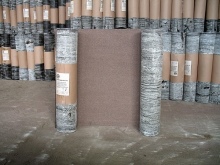
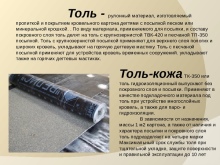
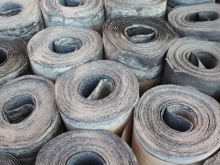
These are the most common varieties that are widely used. Also on sale you can find stamps with an especially coarse dressing on the front side of the sheet. Grades - TG 300 and TKK 400.
The note! Professionals who have been working with various building and finishing materials for several years are advised to carefully examine the quality of the sprinkling. Any rotten impurities are excluded.
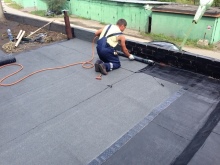
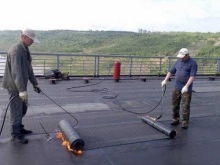
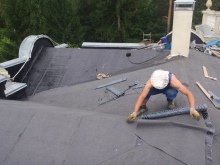
Where is it used?
Roofing paper is used in various fields, depending on the dressing and other qualities of the material.
- The main use is roof covering. The coarse-grained product has found its way into flat roofs.
- Roofing paper with a sandy coating is suitable for waterproofing the foundation. It is also used in the construction industry to fix leaks or perform other repairs.
- Waterproofing material is used for bathrooms. It can be laid under the tiles.
- The basis for a multi-layer roof.
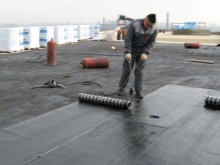

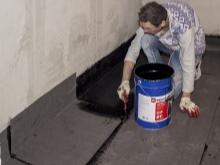
How to install the covering?
To make the most of all the qualities of the material, it is necessary to learn how to lay the roofing paper correctly. If all conditions are met, the roof will remain intact and will last about three years. Despite the fact that the process of laying this material is quite simple, you need to perform all the necessary working steps.
Roofing can be laid on different bases: cinder concrete, wood, concrete. Experts recommend using the product only for flat roofs and those whose slope does not exceed 12 degrees.
Installation should be carried out in a warm season in dry weather.
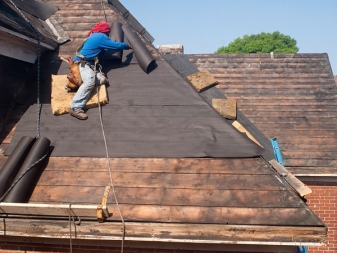
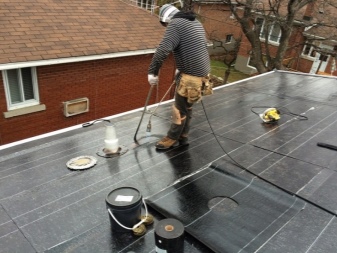
- First you need to remove the old coating (if any). The base is cleaned completely and leveled if necessary. If the roof has a rafter structure, it is necessary to fix the old one or make a new crate.
- In the case when the base is made of reinforced concrete slabs, a screed is made from a solution of cement and sand.
- As the first layer for the roof, you will need only TK 350 (leather). A product with fine dusting is also suitable. It is better to use TAK 420 to decorate the top layer.
- To glue the canvas to the base, you need tar mastic. You can also use klebemass. A large selection of special formulations can be found on the market.
- Before laying, the roll material must be unrolled and divided into parts of the required dimensions. When sectioning, keep in mind that installation must be carried out along the roof.
- If you decide to use finely powdered cloths for the first layer, it is advisable to sand only from the inside out. You can make the surface smoother with a spatula or stiff brush.On the front side, it is recommended to process the canvases, but only to the width of the overlap (about 10 centimeters).
- Before applying to the base, the adhesive is heated and applied in an even layer. The optimal size is about 2 kilograms per square meter.
- The roofing material, cut along the sheet, is placed on the lathing and pressed against the base. The roofing should be carefully smoothed so that it adheres securely. Laying should be done with an overlap.
- In order for the canvases to maintain their integrity for the longest possible time, they must be additionally processed using mastic and pressed down to the crate or other base. Make sure that no bubbles appear during the installation process.
- To fix the sheets, wooden bars are nailed on top of them. They can be triangular or square. Size - 5x5 centimeters. The gap between them should be less than the width of the roofing material by 10 centimeters.
- The second sheet must be mounted so that its edges lie flat on the bars. To fix it, use special roofing nails. If everything is done correctly, the joint of two canvases will be located on the bar.
- To overlap the joint, strips of tar paper are attached on top of it, folded in half. They are also fixed with roofing nails at a distance of 5-6 centimeters.
- On slopes and cornices, the material is tucked under the crate and fastened with nails. The ridge is decorated with boards. The last step is treatment with an antiseptic composition.
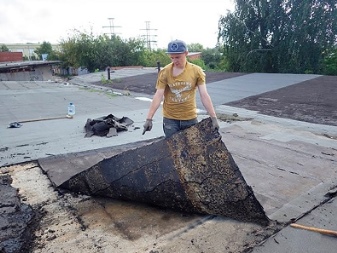














The comment was sent successfully.